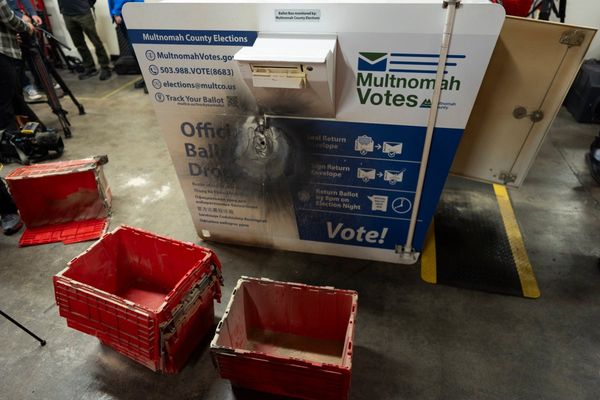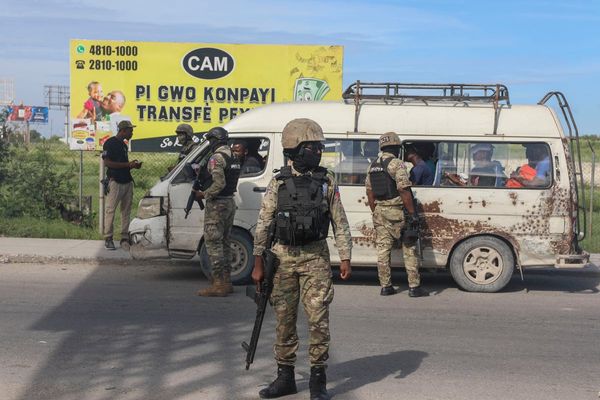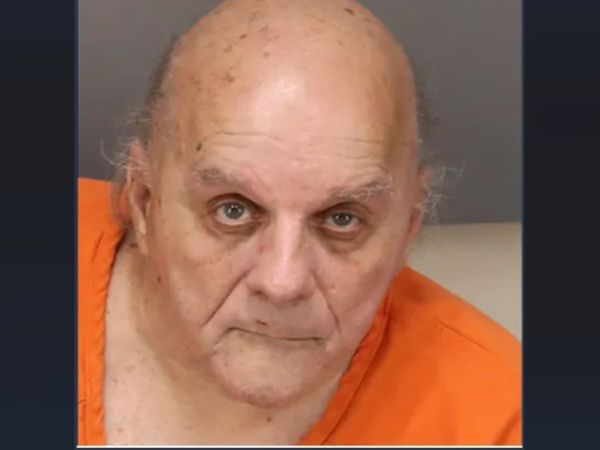
After World War 1, Tulsa was recognized nationally for its affluent African-American community known as the Greenwood District also referenced to as The Black Wall Street. However, the thriving business district and the surrounding neighborhood began to unravel after the events that took place on the mornings of May 30th and June 1st, 1921. On May 30th, 1921, An African-American man named Dick Rowland was apprehended by local police, after being accused of assaulting Sarah Page, a 17-year-old white elevator operator. Tulsa police arrested Rowland the following day and began an investigation. On the morning of June 1, 1921, Greenwood was looted and burned by white rioters upset about allegations.
In the wake of the violence, 35 city blocks lay in charred ruins, and over 800 people were treated for injuries. Historians now believe as many as 300 African-American people may have been murdered during the massacre. About 10,000 black people were left homeless, and property damage amounted to more than $1.5 million in real estate and $750,000 in personal property ($32 million in 2019).
After the massacre, many survivors and their families left Tulsa. African-Americans and white residents who stayed in the city were silent for decades about the about the terror, violence, and losses of this event and as a result, the massacre was largely omitted from local, state, as well as national, histories, causing internalized resentment and mistrust between both black and white communities.
Back in 1921, Tulsa was plagued with one of the worst incidents of racial violence in the history of the United States. Now, in 2019, Tulsa looks a bit different with the smoke cleared out and the ashes gone from the Tulsa Massacre. As Tulsa prepares to commemorate the massacre’s centennial in 2021, new community leaders are stepping up to the plate to revitalize the Greenwood neighborhood and create a sense of unity and understanding between two communities that were divided from the aftermath of the massacre. I met with several of the women of color leaders and activists who are doing their best to cleanse Tusla of the sinister underbelly that was established in 1921.
Women like Ashley Harris Philippsen, Deputy Chief of Community Development & Policy City of Tulsa, Marcia Bruno-Todd, Program Director, Leadership Tulsa, and Carlisha Williams-Bradley, Executive Director are currently doing the work within their community to revitalize Tulsa, years after the Tulsa Massacre. These women are committed to working on issues around social justice, criminal justice, education reform, and inclusivity. I had the opportunity to speak with several of the women to discuss their career journeys and social activism within Tulsa.
Ashley Harris Philippsen, Deputy Chief of Community Development & Policy for City of Tulsa:

Dominique Fluker: Share your career journey.
Harris Philippsen: I started my professional career in Houston at Teach for America. I originally thought that I was going to do civil rights law but ended up seeing how much more powerful I can be in a classroom of kids, helping give them choice filled futures, but then I was contacted by a Houston staffer about coming to Oklahoma. Once visiting Tulsa in 2011, I was hit by the stark contrast in North Tulsa versus South Tulsa, which is completely void of economic development. So I wondered, after the Tulsa Massacre, did things stop? I learned that many of the Black Wall Street businesses were torn down due to urban renewal, which led to disinvestment in the area and you see that impact on the North Tulsa community. The state of emergency within the school systems, the lack of dynamic things happening led me to move here. I worked for Teach for America Oklahoma for three years and then got an offer to design curriculum for a leadership development program, and what excited me about leaving Teach for America to do this work was to give aspiring leaders the knowledge, skills, and habits desired to drive meaningful change. Then the Mayor of Tulsa approached me with the opportunity to drive civic engagement and ensure the policy is equitable with North Tulsa in mind. I decided to work for the city to ensure that black voices are central in development and policy.
Fluker: What work needs to be done to establish tangible and fundamental growth in North Tulsa?
Harris Philippsen: I recently joined the City of Tulsa’s economic justice team and one of the initiatives that I’m working on is providing North Tulsans the opportunity to work in the newer buildings opening up within the city while earning livable wages. My job is getting out and engaging the community, ensuring the community is central in the decisions that were made and driving justice and inclusion. I want to form coalitions with community members to inform planning for those spaces and that would be a success for me. Creating a policy to ensure that this isn’t something that will only last this administration but beyond.
Fluker: Why is it important to remind people about the Tulsa Massacre?
Harris Philippsen: I think it’s important to educate a lot of people about the Tulsa Massacre, there’s been a lot of talk about children not learning it in schools. There’s also this idea of confronting the cognitive dissonance. A lot of people want to move on and not discuss it, but this is part of our history that has been swept under the rug for so long. So bringing it front and center and having people understand what led to this terrorist attack on American soil and what is the Tulsa we see now and how did it impact that?
Fluker: What are the effects that you see in North Tulsa from the Tulsa Massacre?
Harris Philippsen: As a non-native Tulsan, folks have shared that we had the momentum to be like what the Harlem Renaissance was but it got cut short, so what did we miss out on? What could’ve been central to Tusla, Oklahoma there? Also, I’ve noticed the fear factor amongst native Tulsans regarding the massacre, people were afraid to speak out and didn’t share that history. There also was a mass exodus, for people who didn’t stay and build, so families left and I just think, all of that human capital and social currency does something to a community in terms of a critical mass of folks. That demoralizing event which was then compacted by the urban removal resulted in the death of the Black Wall Street. There was a loss of community.
Fluker: What three words guide your activism and community work?
Harris Philippsen: Justice. Education. Black Tulsans.
Fluker: How are you bringing change and mending the interpersonal dynamics of two fractured
communities within Tulsa?
Harris Philippsen: What success looks like for me and what I want my community to hold me accountable to is this idea of coalition building. We mend the fractures through relationships and through involvement. I don’t what to just do lip service, I don’t want to just confirm people’s doubts. I have people’s trust through the work I’ve done but what sets this work apart is having people be part of the process. My goal in the next two months is to bring together people from different subgroups who could form the design of housing development for North Tusla.
Marcia Bruno-Todd, Program Director, Leadership Tulsa:

Fluker: Share your career journey and position at Leadership Tulsa.
Bruno-Todd: I’m essentially a connector of people and resources. It’s amazing. It’s my most liberating act of social justice and community building that I can do and that’s what I do at Leadership Tulsa. Our mission for our organization is to identify, develop and connect diverse leaders so they can make an impact on our community through service. I started in higher education, social justice work through diversity and inclusion and now through leadership development. From my understanding, how I was first introduced to Leadership Tulsa was through the Hispanic Leadership Institute in partnership with the Greater Tulsa Hispanic Chamber of Commerce. The Greater Tulsa Hispanic Chamber of Commerce identified the need that needed younger Latinx people to serve in leadership positions across Tulsa. Nothing ever existed like this in Tusla, I’m a Latinx leader, I’d like to see what this is. Quite frankly, I joined super skeptical because my experience with Latinx Tulsa was a lot of infighting. The program provided the platform to challenge that narrative.
Fluker: What are some issues that the Latinx/Latino community faces in Tulsa and why?
Bruno-Todd: The lack of educational equity for our black and brown children. Our Latinx children, which is over a third of student population in Tulsa public school are suffering exponentially, at the rate of our African-American children, so our parents are coming together and recognizing that this is a problem. Leadership Tulsa’s role is to break the idea of silos between the two communities. My perspective is for many years, we’ve been fighting for our Latinx students and resources to be given a fair chance.
Fluker: I’ve been hearing the word accountability, the theme of reclaiming Tulsan narratives and taking up space, since being here in Tulsa. So how do you take up space?
Bruno-Todd: There’s power in reclaiming the known narrative. I’m proud of North Tulsa. Leadership Tulsa has the opportunity to share honestly and openly the assets of our community the opportunities for growth while holding people accountable for the roles that they play in their communities. When I’m invited to the table, I occupy space with a return. When you invite me, I invite two others. I’m able to connect people to resources because something that prevents silos is a connection. I strive to intergenerationally connect people so that their narrative isn’t lost either. There’s a lot to be learned from how things worked in the past, survival, but in also the integration of our next generation.
Fluker: What sparks your drive for this type of work? What’s your personal manifesto on diversity, equity, inclusion?
Bruno-Todd: The opportunity for innovation, equity, and growth.
I come to you, as a proud Latinx, Boricua, Tulsan, mother, and wife, fully aware that the blood of the oppressed and the oppressor flow through my veins. I have both benefited and been disenfranchised by both privileges alike.
Carlisha Williams-Bradley, Executive Director Impact Tulsa:

Fluker: Share how Impact Tulsa is helping the community regarding providing education opportunities.
Williams-Bradley: When I think about the work with Impact Tusla, I really think about the culmination between my experiences with non-profit education reform and being a native Tulsan. We really work as a connector of all 15 school districts in Tulsa County. We work with business leaders with non-profit organizations and we center around the educational outcomes and the data. We’re bringing stakeholders to have conversations about the data through measuring what matters, we want to replicate those best practices and ultimately we want to align resources so that we are spending funds in ways that are equitable but also enhancing outcomes for students in our city. I think that often times we are having conversations around education and what we perceive to be challenges without the data present. One thing that we are stepping into the next phase of our work is an intentional and unapologetic focus on racial equity. There seems to be this fear of having a conversation of what really are academic outcomes for children of color, so we’re diving into the space of aggregating the data to see what the real challenges are within the classroom. Secondly, we’re working on community engagement and voice. At Impact Tulsa we have this unique opportunity to not only work with superintendents but parents and students as well.
Fluker: How are you humanizing the data of these families?
Williams-Bradley: This year with our Community Impact Report, it actually is sharing the conversations of leaders within our communities, of students, of parents and city officials. We are taking their voices alongside the data points. Next, to the data, these voices speak about their call to action, their causes and what are the things we can do collectively to support them and public education further. Often times we can look at the data and make judgments and past opinions but until we push to the point to where we are hearing from those who are most connected to it, we’re not understanding the pain points.
Fluker: What are some challenges in the North Tulsa community with education reform?
Williams-Bradley: I would say that one of the challenges in public education in North Tulsa, is historically we’ve had a failing education system that’s been provided to families. There’s been an introduction of choice through select charter schools available, but ultimately replicating best practices and providing students with school options within their neighborhood, we’re still not there yet.







